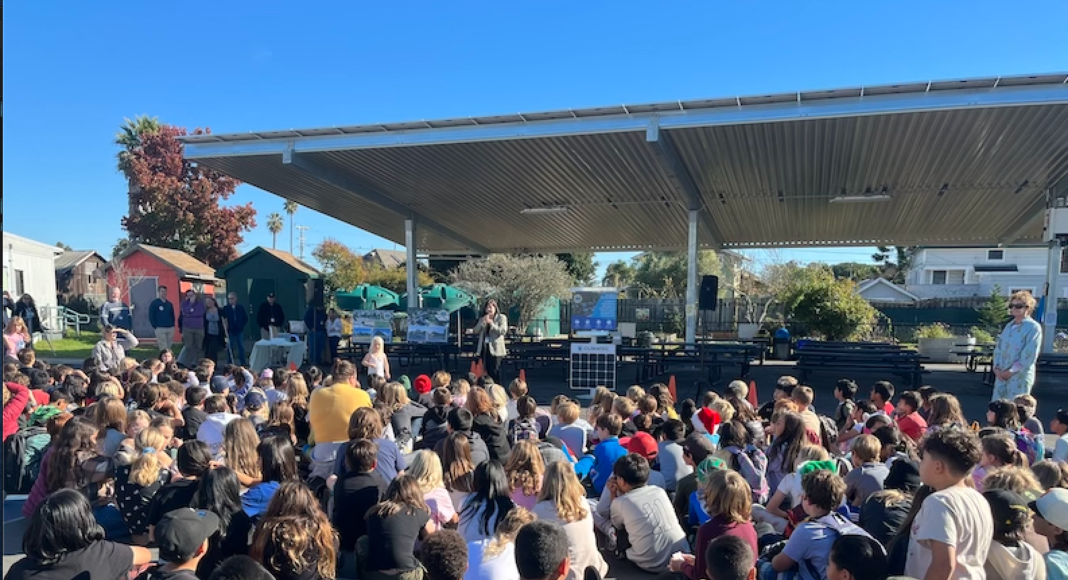Yesterday during pick-up time, Bay View Elementary students, parents and faculty gathered to celebrate a big milestone: the school became the district’s inaugural net-zero campus, generating as much or more energy than it consumes.
The achievement fits into a larger push that Santa Cruz City Schools District (SCCS) is making as it tries to achieve zero net energy (ZNE) across the district. But according to SCCS spokesperson Sam Rolens, the district isn’t the only one happy: students have also been excited by the news.
“The sustainability movement is really catching hold of young people, as young as elementary school aged kids,” Rolens said. “In our curriculum, we’re talking about ecology. We’re talking about sort of energy systems, solar panels. It’s a conversation that we have been having with students so that when we talk about energy usage, or when we talk about solar energy, they all have a pretty good base of knowledge for it.”
In 2014, the SCCS launched a program to reduce greenhouse gas emissions and lower maintenance and operational costs. A four-phase program, the initial three phases include the district modernized HVAC equipment, implemented smart building controls, and upgraded to energy-efficient LED lighting both indoors and outdoors.
Thanks to bonds passed by local voters in 2016 and later in 2020, the school district has been able to fund these sustainable upgrades throughout schools.
Now entering its fourth and final phase, SCCS is deploying energy-optimizing technologies across its four schools. Upon completion, the district will have LED lighting district-wide and a new source of renewable energy—the installation of a solar-mounted carport like the one at Bay View Elementary.
Superintendent Kris Munro expressed pride in leading the community toward sustainability, emphasizing the district’s commitment to expanding its solar infrastructure.
“It’s not only that our families, our students, and our community have time and again made it clear what a priority it is—we’re also committed to being responsible with the public’s investment into our schools,” Munro said in a press release. “With this step, we’re not only addressing the unfolding climate change crisis but significantly reducing our energy budget going forward.”
The impact of the first three phases is already evident, with SCCS having reduced greenhouse gas emissions by 6,417 tons—equivalent to saving over 825,000 gallons of gasoline or preserving 121,285 trees from deforestation. The upcoming fourth phase is projected to further decrease greenhouse gas emissions by 26%, contributing to an overall program that is anticipated to save the district $9.75 million in general funds over the lifetime of its new equipment.
“It’s a big priority of ours to just be thanking the community for the facility’s bonds, because without them we just wouldn’t be able to do any of this,” Rosen said. “We’re incredibly proud of the priorities that we set as a school. But none of that would matter if we didn’t have that support.”














who was the local solar installation contractor?